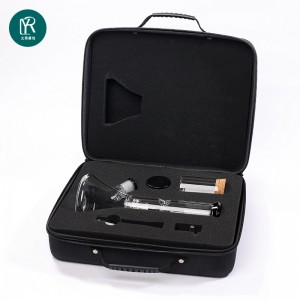In the globalized market environment, the OEM (Original Equipment Manufacturer) and ODM (Original Design Manufacturer) cooperation model has become an important choice for many enterprises to achieve rapid product launch and cost control. Whether for enterprises with mature designs but lacking production capacity, or for those that need to rely on external design resources to quickly launch new products, OEM/ODM cooperation offers flexible and efficient solutions. This article will elaborate in detail on the complete process and precautions from inquiry to mass production, helping enterprises achieve efficient and smooth product development and production in cooperation.
First, a panoramic view of the cooperation process
The OEM/ODM cooperation process can be divided into the following key stages:
Inquiry and initial communication
Demand assessment and technical solution alignment
Sample preparation and confirmation
Small-scale trial production
Mass production preparation
Mass production and delivery
After-sales service and support
Second, inquiries and initial communication
Inquiries are the starting point of cooperation and are usually initiated by potential customers. At this stage, customers will contact suppliers through various channels (such as B2B platforms, exhibitions, recommendations, etc.) to express their intention to cooperate. Suppliers need to prepare the following contents to demonstrate their professionalism and capabilities:
Company Background and Experience: Introduce the company’s experience in related industries, main products and successful cases.
Production capacity and certification: Display the factory scale, production equipment, quality management system (such as ISO 9001), and product certifications (such as FCC, CE, etc.).
Product Specifications and Capabilities: Provide the specification sheets and technical parameters of existing products to demonstrate production capacity and technical strength.
Third, demand assessment and technical solution alignment
After the initial communication, the client will provide more detailed product requirements, including product specifications, design documents, bill of materials, etc. Suppliers need to assess these requirements to determine whether they can meet the customers’ demands. The key activities of this stage include:
Demand review: Organize departments such as R&D, production, and procurement to review customer demands, assess technical feasibility and production costs.
Technical solution connection: Conduct detailed technical discussions with the client’s technical team, including product design, production processes, quality standards, etc.
Quotation and Contract: Based on the assessment results, provide the customer with a detailed quotation and sign the contract after both parties reach an agreement.
Fourth, sample preparation and confirmation
Sample making is a key step to ensure that the product meets the customer’s requirements. The supplier needs to make samples based on the design documents provided by the customer and submit them to the customer for confirmation. The precautions at this stage include:
Sample quality: Ensure that the quality and performance of the samples meet the customer’s requirements to avoid project delays caused by sample issues.
Communication and Feedback: Maintain close communication with customers and promptly handle their feedback and modification suggestions regarding samples.
Sample testing: Conduct necessary tests on the samples, such as functional testing, compatibility testing, reliability testing, etc., to ensure the stability and reliability of the samples.
Fifth, small-scale trial production
After the samples are confirmed, the small-scale trial production stage begins. The purpose of this stage is to verify the stability of the production process and the consistency of product quality. Key activities include:
Trial production preparation: Prepare the materials, equipment and personnel required for trial production to ensure its smooth progress.
Trial production monitoring: Strictly monitor the trial production process, record problems and data during production, and provide references for mass production.
Problem-solving: Promptly address the issues that arise during the trial production process, optimize the production process, and enhance the yield of the products.
Sixth, mass production preparation
After the successful trial production of a small batch, it enters the preparation stage for mass production. At this stage, it is necessary to ensure that all resources and processes are ready to support large-scale production. Key activities include:
Mass production plan: Develop a detailed mass production plan, including production schedule, material procurement, personnel arrangement, etc.
Supply chain management: Ensure the stability and timeliness of material supply to prevent production disruptions caused by material shortages.
Quality Control: Establish a strict quality control system to ensure the quality and consistency of mass-produced products.
Seventh, Mass production and delivery
The mass production stage is the climax of cooperation, and it is necessary to ensure the efficiency and stability of the production process. Key activities include:
Production monitoring: Conduct real-time monitoring of the production process to ensure that the production progress conforms to the plan and promptly handle any issues arising during production.
Quality inspection: Conduct strict quality inspections on each batch of products to ensure they meet quality standards.
Logistics and Delivery: Arrange logistics transportation to ensure that products are delivered to customers on time and safely.

Eighth, After-sales service and support
After the product is delivered, after-sales service and support are equally important. The supplier is required to provide the following services
Technical support: Provide necessary technical support to customers and solve problems that arise during the use of the product.
Product maintenance: We offer product maintenance and repair services to extend the service life of products.
Continuous improvement: Based on customer feedback and market changes, continuously improve and upgrade the product.
Ninth, Precautions
During the OEM/ODM cooperation process, the following points of attention can help enterprises avoid common problems and ensure the smooth progress of the cooperation
Communication and Coordination: Maintain close communication with the client, promptly feedback project progress and issues, and ensure that both parties have a consistent understanding and expectation of the project.
Risk Management: Identify and assess risks in the project, formulate corresponding risk management plans, and ensure the smooth progress of the project.
Intellectual property protection: Sign confidentiality agreements and intellectual property protection clauses to safeguard the intellectual property rights and business secrets of both parties.
Quality Control: Establish a strict quality control system to ensure product quality and consistency, and avoid customer dissatisfaction due to quality issues.
Cost control: Reasonably control project costs to prevent project failure due to cost overruns.
The OEM/ODM cooperation model provides flexible and efficient solutions for enterprises’ product development and production. The complete process from inquiry to mass production involves multiple stages and key activities, which require meticulous planning and management by enterprises. By following the above processes and precautions, enterprises can achieve efficient and smooth product development and production in cooperation, meet market demands and enhance market competitiveness. It is hoped that the content of this article can provide valuable references for OEM/ODM cooperation of enterprises.
Post time: Oct-29-2025

